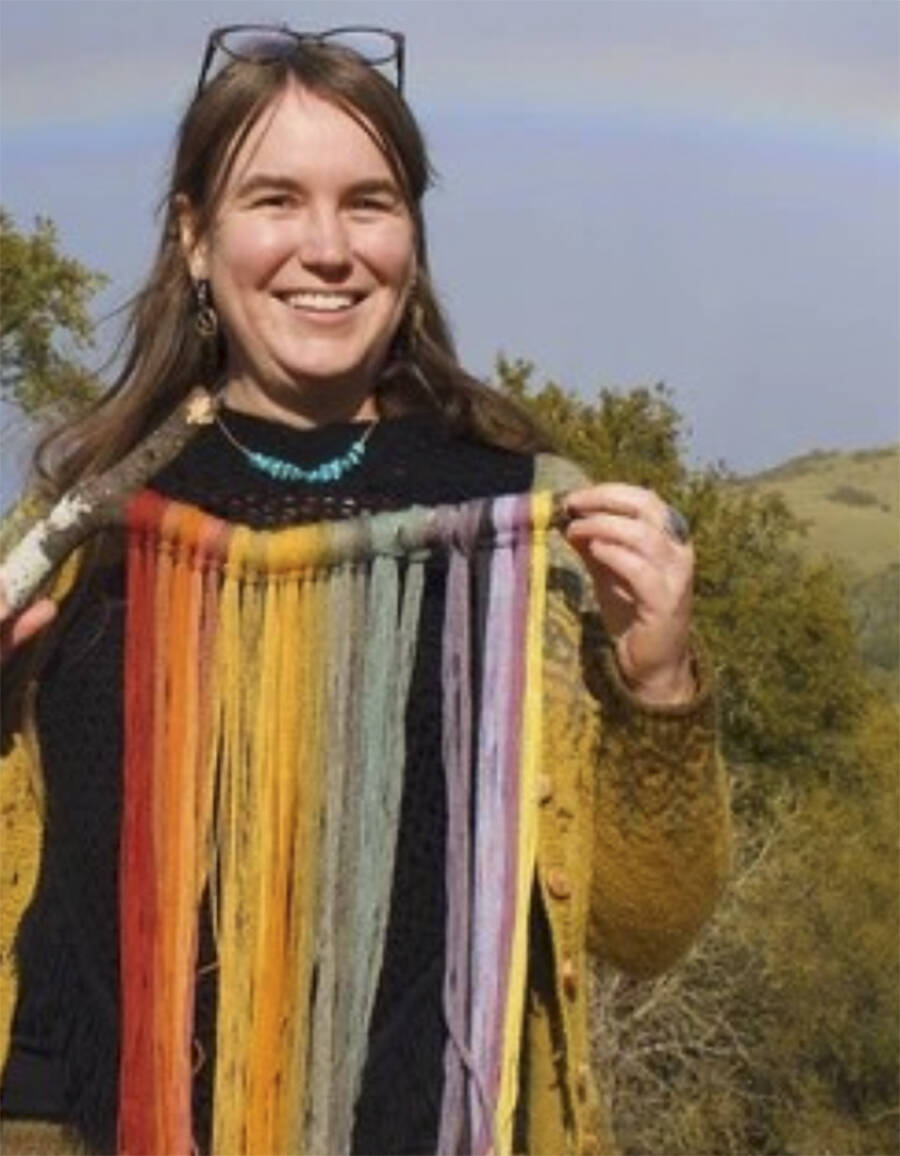Imagine a palette of colors—from rich rose and red to brilliant shades of orange, warm golds and chartreuse, mossy greens, ethereal blue-greens, and deep dark purples—drawn not from tubes or jars but from the forest floor.
That is the world of mushroom dyeing, and from 9 a.m. to 4 p.m. Nov. 8-10, mycological enthusiast and textile artist Alissa Allen will guide Bainbridge Artisan Resource Network students through its wonders, transforming humble fungi into brilliant, tangible colors for future creations.
Allen, the founder of Mycopigments, is passionate about fungi. Her fascination with mushrooms began in early childhood when she foraged alongside her mother. Joining the Puget Sound Mycological Society in her early 20s opened her eyes to the vast world of fungi. Her interest was cultivated by some of the greatest regional mycologists of that era.
Allen was introduced to mushroom dyeing in the late 1990s when only a handful of elders were practicing the craft on the West Coast. Armed with a now out-of-print book called “Mushrooms for Color,” she began experimenting. It would be another five years before she’d meet these elders before she was introduced to the larger international mushroom dye community.
“I was like a mad scientist,” she said. “I loved the whole process from heading to the forest, foraging for treasured dye species, extracting dyes and seeing the results.”
That one-time hobby blossomed into a full-time career in 2012, and Allen has been teaching since then. In addition to her workshops, she has been cultivating an international community of nearly 39,000 mushroom and lichen dyeing enthusiasts on Facebook.
“I set out with a goal of being a mushroom missionary, sharing widely and freely with as many people as possible,” she said.
She draws students in with the allure of vibrant, natural dyes and introduces people to the broader importance of fungi in the ecosystem. In her hands, mushroom dyeing becomes more than a craft—a way of seeing and caring for the world.
This has gotten easier in recent years, as she jokes, “Mycology is mushrooming.” She said that it wasn’t long ago that mycophobia—fear of fungi—influenced our approach to interacting with fungi. Now more people are aware of the importance of this understudied group of organisms. “Mushrooms are just this mysterious gem,” she said. Neither plants nor animals, mushrooms constitute their own kingdom.
At the workshop at BARN, participants will learn about mushroom and lichen identification, ethical foraging practices, and extracting and using fungal dyes. Allen will display a variety of local specimens, both dried and fresh, showcasing the palette of colors available in the Northwest.
“This workshop will take place at the peak of the season when the best mushrooms are out there – the reds, the blues, and the greens,” she said.
Beyond the technical aspects of dyeing, Allen hopes to instill in her students a deeper connection to the natural world. “Going out to find these things gives you a different relationship with the place where you live,” she said. “You engage more intimately with the land that surrounds you.”
Without mushrooms, trees wouldn’t grow very tall, she said. Fungi used for dyes have an obligate relationship with specific trees, providing nutrients and moisture back into the forest.”



